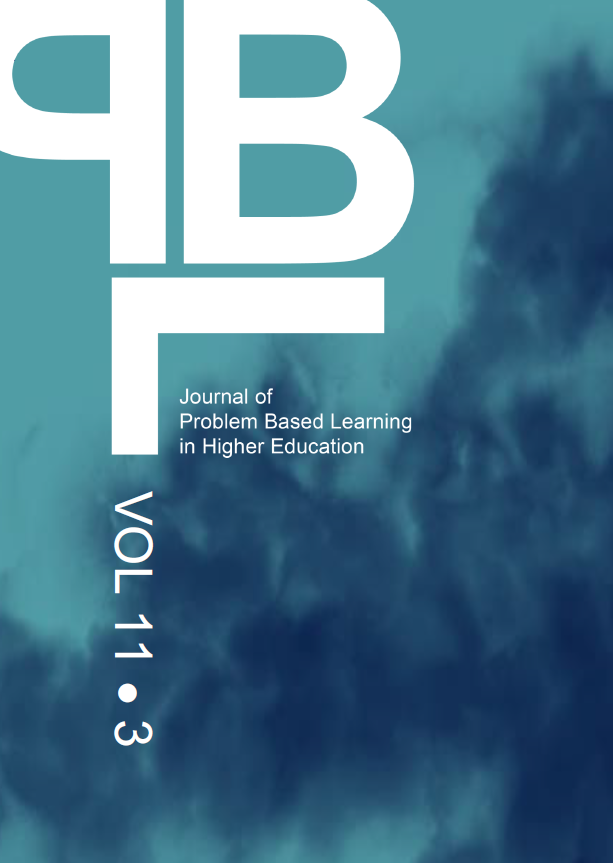Abstract
Since pre-internship medical students appeared inefficient in acquiring fundamental knowledge in large classes, a hybrid instructional method of problem-and-lecture-based learning (PLBL) was designed to leverage the complementary strengths of PBL in reasoning under minimal guidance and LBL in immediate knowledge retention. We improved PBL (IPBL) in its instructional process and grading in a way that’s feasible in large classes, divided in IPBL almost 50 students into 7-10 squads as a figure simulating student counts in classic PBL class to strive for each squad member to achieve the same level of knowledge, and applied IPBL to about half of the instructional contents while LBL to another half for their complementary strengths. In this case, PLBL led to more number of test questions correctly answered by all students in a class, more students in higher test score buckets, and higher student perception scores on the methodology. PLBL facilitates fundamental knowledge acquisition in large classes within 50 students prior to medical internships.
References
Amoako-Sakyi, D., & Amonoo-Kuofi, H. (2015). Problem-based learning in resource-poor settings: lessons from a medical school in Ghana. BMC Med Educ, 15, 221. https://doi.org/10.1186/s12909-015-0501-4
Bains, M., Kaliski, D. Z., & Goei, K. A. (2022). Effect of self-regulated learning and technology-enhanced activities on anatomy learning, engagement, and course outcomes in a problem-based learning program. Adv Physiol Educ, 46(2), 219-227. https://doi.org/10.1152/advan.00039.2021
Bandy, A. (2021). Perception of medical students about problem-based learning at Jouf University. J Pak Med Assoc, 71(4), 1152-1156. https://doi.org/10.47391/jpma.1418
Burgess, A., Bleasel, J., Hickson, J., Guler, C., Kalman, E., & Haq, I. (2020). Team-based learning replaces problem-based learning at a large medical school. BMC Med Educ, 20(1), 492. https://doi.org/10.1186/s12909-020-02362-4
Chotiyarnwong, P., Boonnasa, W., Chotiyarnwong, C., & Unnanuntana, A. (2021). Video-based learning versus traditional lecture-based learning for osteoporosis education: a randomized controlled trial. Aging Clin Exp Res, 33(1), 125-131. https://doi.org/10.1007/s40520-020-01514-2
Demikhova N., Prykhodko O., Loboda A., Bumeister V., Smiianov V., Smiianov Y., Lukianykhin V., & Demikhov O.(2016). Using PBL and Interactive Methods in Teaching Subjects in Medical Education. Journal of Problem Based Learning in Higher Education, 4(1), 81-90. https://doi.org/10.5278/ojs.jpblhe.v0i0.1227
Ding, Y., & Zhang, P. (2018). Practice and effectiveness of web-based problem-based learning approach in a large class-size system: A comparative study. Nurse Educ Pract, 31, 161-164. https://doi.org/10.1016/j.nepr.2018.06.009
Dulloo, P., & Pathare, N. A. (2013). Case Based Methodology: A Method to Enhance the Learning of Physiological Basis of Cardiovascular and Respiratory System to Undergraduate Medical Students. Am J Educ Res, 1(10), 425-429.
Ellaway, R. H., Poulton, T., & Jivram, T. (2015). Decision PBL: A 4-year retrospective case study of the use of virtual patients in problem-based learning. Med Teach, 37(10), 926-934. https://doi.org/10.3109/0142159x.2014.970627
Hung, W., Dolmans, D., & van Merriënboer, J. J. G. (2019). A review to identify key perspectives in PBL meta-analyses and reviews: trends, gaps and future research directions. Adv Health Sci Educ Theory Pract, 24(5), 943-957. https://doi.org/10.1007/s10459-019-09945-x
Ishizuka, K., Shikino, K., Tamura, H., Yokokawa, D., Yanagita, Y., Uchida, S., . . . Ikusaka, M. (2023). Hybrid PBL and Pure PBL: Which one is more effective in developing clinical reasoning skills for general medicine clerkship?-A mixed-method study. PLoS One, 18(1), e0279554. https://doi.org/10.1371/journal.pone.0279554
Jiménez-Saiz, R., & Rosace, D. (2019). Is hybrid-PBL advancing teaching in biomedicine? A systematic review. BMC Med Educ, 19(1), 226. https://doi.org/10.1186/s12909-019-1673-0
Klegeris, A., Bahniwal, M., & Hurren, H. (2013). Improvement in generic problem-solving abilities of students by use of tutor-less problem-based learning in a large classroom setting. CBE Life Sci Educ, 12(1), 73-79. https://doi.org/10.1187/cbe.12-06-0081
Klegeris, A., & Hurren, H. (2011). Impact of problem-based learning in a large classroom setting: student perception and problem-solving skills. Adv Physiol Educ, 35(4), 408-415. https://doi.org/10.1152/advan.00046.2011
Lian, J., & He, F. (2013). Improved performance of students instructed in a hybrid PBL format. Biochem Mol Biol Educ, 41(1), 5-10. https://doi.org/10.1002/bmb.20666
More, V. R., Singh, G., & Patwardhan, K. (2020). Introducing Hybrid Problem-Based Learning Modules in Ayurveda Education: Results of an Exploratory Study. J Altern Complement Med, 26(2), 130-137. https://doi.org/10.1089/acm.2019.0293
Norose, T. (2013). [Development of integrated clinical abilities by simulated patient assisted problem-based learning tutorial]. Yakugaku Zasshi, 133(2), 223-230. https://doi.org/10.1248/yakushi.12-00250-1
Qin, X. J., Kong, J., Lu, L., Lu, Z. F., & Wang, X. K. (2010). Application of problem-based learning in a large class in stomatology course. J Oral Maxillofac Surg, 68(4), 739-743. https://doi.org/10.1016/j.joms.2009.04.002
Singh, D., Tripathi, P. K., & Patwardhan, K. (2016). “What do Ayurveda Postgraduate Entrance Examinations actually assess?” - Results of a five-year period question-paper analysis based on Bloom's taxonomy. J Ayurveda Integr Med, 7(3), 167-172. https://doi.org/10.1016/j.jaim.2016.06.005
Solomon, Y. (2021). Comparison Between Problem-Based Learning and Lecture-Based Learning: Effect on Nursing Students' Immediate Knowledge Retention [Response To Letter]. Adv Med Educ Pract, 12, 163-164. https://doi.org/10.2147/amep.S305514
Stentoft, D. (2019). Problem-based projects in medical education: extending PBL practices and broadening learning perspectives. Adv Health Sci Educ Theory Pract, 24(5), 959-969. https://doi.org/10.1007/s10459-019-09917-1
Yan, Q., Ma, L., Zhu, L., & Zhang, W. (2017). Learning effectiveness and satisfaction of international medical students: Introducing a Hybrid-PBL curriculum in biochemistry. Biochem Mol Biol Educ, 45(4), 336-342. https://doi.org/10.1002/bmb.21046
Zhao, W., He, L., Deng, W., Zhu, J., Su, A., & Zhang, Y. (2020). The effectiveness of the combined problem-based learning (PBL) and case-based learning (CBL) teaching method in the clinical practical teaching of thyroid disease. BMC Med Educ, 20(1), 381. https://doi.org/10.1186/s12909-020-02306-y

This work is licensed under a Creative Commons Attribution 4.0 International License.
Copyright (c) 2023 Qing Li, Wenjia Wang, Youjun Mi, Yafei Dai, Yu Luo, Yaqin Ling, Juan Li
